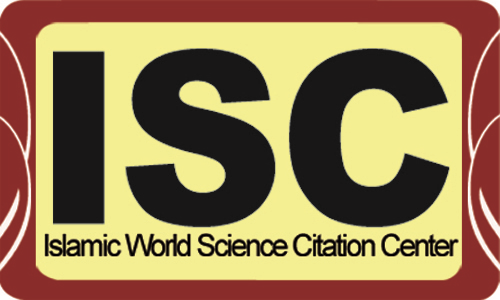Scientific principles for studying the soil requirements of the medicinal plant Allium jesdianum Boiss. & Buhse
DOI:
https://doi.org/10.5281/zenodo.16895247Keywords:
Allium jesdianum Boiss. & Buhse, Nutrition, Biological fertilizers, Calcareous, Medicinal plants, pHAbstract
This study investigates the soil and nutritional requirements of the medicinal plant Allium jesdianum Boiss. & Buhse with a focus on the role of fertilizers and biofertilizers in improving growth and quality. The results showed that plants grown in soils treated with ammonium sulfate had higher concentrations of Fe, Mn, Zn, and B compared to those treated with calcium nitrate. Allium jesdianum was able to reduce rhizosphere pH through the release of organic acids and protons, facilitating nutrient uptake in alkaline soils. The application of mycorrhizal biofertilizers further enhanced nutrient absorption, especially phosphorus and micronutrients, and improved soil quality by contributing to physical, chemical, and biological balance. These findings highlight the importance of integrated nutrient management in promoting the yield, medicinal quality, and sustainability of Allium jesdianum cultivation.
References
Acikgoz, M. A., & Karnak, E. E. (2013). Micro-nutrient composition of some medicinal and aromatic plants commonly used in Turkey. Scientific Papers. Series A. Agronomy, 56, 169–173.
Ahmadi, F., Samadi, A., & Rahimi, A. H. (2020). Improving growth properties and phytochemical compounds of Echinacea purpurea (L.) medicinal plant using novel nitrogen slow-release fertilizer under greenhouse conditions. Scientific Reports, 10, 13842. https://doi.org/10.1038/s41598-020-70949-4
Arndt, S. K., Clifford, S. C., Wanek, W., Jones, H. G., & Popp, M. (2001). Physiological and morphological adaptations of the fruit tree Ziziphus rotundifolia in response to progressive drought stress. Tree Physiology, 21, 705–715.
Aslani, Z., Hosani, A. M., Rasouli Saedghiani, H., Sefidkan, F., & Barin, M. (2011). The effect of two species of arbuscular mycorrhizal fungi (Glomus mosseae and Glomus intraradices) on growth, chlorophyll levels, and phosphorus absorption in basil plant (Ocimum basilicum L.) under drought stress conditions. Iranian Journal of Medicinal and Aromatic Plants Research, 27(3), 471–486.
Behzadi, Y., & Salehi, A. (2016). The effect of using organic, biological and chemical fertilizers on the absorption of N, P, K elements, seed yield, and the yield of the essential oil of the medicinal plant Pimpinella anisum L. Iranian Journal of Medicinal and Aromatic Plants Research, 32(6), 1026–1036.
Bethlenfalvay, G. J., Brown, M. S., Ames, R. N., & Thomas, R. S. (1988). Effects of drought on host and endophyte development in mycorrhizal soybeans: Water use and phosphate uptake. Physiologia Plantarum, 72, 565–571.
Chaudhary, V., Kapoor, R., & Bhatnagar, A. K. (2007). Effects of arbuscular mycorrhiza and phosphorus application on artemisinin concentration in Artemisia annua L. Mycorrhiza, 17, 581–587.
Deepadevi, M., Basu, M. J., & Santhaguru, K. (2010). Response of Sorghum bicolor L. Moench to dual inoculation with Glomus fasciculatum and Herbaspirillum seropedicae. General and Applied Plant Physiology, 36(3), 176–182.
Dehghani Meshkani, M. R., Naqdi Badi, H. A., Rezazadeh, Sh. A., & Darzi, M. T. (2010). The effect of biological and chemical fertilizers on yield and components of flower yield in chamomile medicinal plant. Proceedings of the National Conference of Medicinal Plants. https://sid.ir/paper/819798/fa
Eskandari, M., Khaghani, Sh., & Gemarian, M. (2017). A review on the effect of vermicompost organic fertilizer on medicinal plants. Proceedings of the 8th National Conference on Medicinal Plants and Sustainable Agriculture, 21.
Hassan, M., Elwan, M., & Haggag, O. (2015). Plant growth, yield, macro and micro-nutrients uptake of fennel (Foeniculum vulgare Mill.) positively affected by N-sources and rates as well as foliar application of micronutrients. Hortscience Journal of Suez Canal University, 4(1), 7–16. https://doi.org/10.21608/hjsc.2015.6468
Hosseini, M. S. (2012). Macroelements nutrition (NPK) of medicinal plants: A review. Journal of Medicinal Plants Research, 6(12), 2249–2255.
Hosseini-Mazinani, S. M., & Hadipour, A. R. (2014). Improving the quantitative and qualitative performance of the medicinal plant Calendula officinalis L. by using biofertilizers. Quarterly Journal of Medicinal Plants, 15(2), 83–91.
Ismaelpour, B., Jalil-Vand, P., & Hadian, J. (2013). Effect of drought stress and mycorrhizal fungus on some morphophysiological traits and yield of savory (Satureja hortensis L.). Journal of Ecology, 5(2), 169–177.
Jalil-Vand, P., Esmaelpour, B., Hadian, J., & Rasulzadeh, A. (2011). Effect of drought stress and mycorrhizal fungus on the growth and secondary metabolites of savory. Proceedings of the 7th Congress of Horticultural Sciences of Iran, Isfahan University of Technology, 2.
Kafi, M., Zand, A., Sharifi, H. R., Guldani, M., & Lahuti, M. (2005). Plant physiology (translation). Academic Jihad Publications.
Khaosaad, T., Vierheilig, H., Nell, M., Zitterl-Eglseer, K., & Novak, J. (2006). Arbuscular mycorrhiza alters the concentration of essential oils in oregano (Origanum sp., Lamiaceae). Mycorrhiza, 16(6), 443–446.
Koucheki, A. R., Zand, A., Benaya Aval, M., Rezvani-Moghadam, P., Mahdavi Damghani, A. A., Jamial-Ahmadi, M., & Vesal, S. R. (2017). Plant ecophysiology (translation, 2 vols.). Ferdowsi University of Mashhad Publications.
Majidi, A., & Amiri, P. (2013). Biofertilizers of mycorrhizal fungi: A turning point in reducing the effects of environmental stresses in crop production. Quarterly Journal of Agricultural Engineering and Natural Resources, 11(42), 18–21.
Manoj Kumar, R., Puri, S., Pundir, A., Punia Bangar, S., Changan, S., Choudhary, P., Parameswari, E., Alhariri, A., Samota, M. K., Damale, R. D., Singh, S., Berwal, M. K., Dhumal, S., Bhoite, A. G., Senapathy, M., Sharma, A., Bhushan, B., & Mekhemar, M. (2021). Evaluation of nutritional, phytochemical, and mineral composition of selected medicinal plants for therapeutic uses from cold desert of Western Himalaya. Plants, 10(7), 1429. https://doi.org/10.3390/plants10071429
Mirzajani, M. R., Majidian, M., & Mohsen Abadi, G. (2019). Evaluation of the effect of combined nutrition on the quantitative yield and percentage of the essential oil of the medicinal plant Melissa officinalis. Plant Products, 42(4), 469–482.
Mousavinik, S. M. (2012). Investigating the effect of different levels of sulfur fertilizer on the quantitative and qualitative yield of the medicinal plant Plantago ovata L. under drought stress conditions in the Baluchistan region. Agricultural Ecology, 4(2), 170–182.
Mozaffarian, V. (2012). Identification of medicinal and aromatic plants of Iran. Moaser Publisher.
Nouruzi, S., Sohrabi, A., Khawazi, K., & Matinfar, H. R. (2018). The effect of sulfur consumption on the trend of pH changes and soil phosphorus absorption capacity in wheat (Triticum aestivum L.). Soil Biology, 6(1), 29–41.
Omidi, A., Mirzakhani, M., & Ardakani, M. R. (2014). Evaluation of quality traits of saffron (Carthamus tinctorius L.) under the application of Azotobacter and mycorrhizal symbiosis. Journal of Ecology, 6(2), 324–338.
Panahi Kordlaghari, Kh. (2011). Nutrition of agricultural plants. Nusuh Publications.
Perastesh, F., Alikhani, H. A., Etesami, H., & Hassandokht, M. R. (2019). The effect of vermicompost enriched with phosphate dissolving bacteria on the availability of phosphorus, pH and biological indicators in a calcareous soil. Electronic Journal of Soil Management and Sustainable Production, 9(3), 25–46.
Rahimi, A. (2017). The effect of mycorrhizal fungus on the physiological characteristics, active ingredients and yield of the medicinal plant borage (Borago officinalis L.) under water stress (Doctoral dissertation). Yasouj University.
Rahimi, A. (2023). The effect of mycorrhizal fungi, water stress, and year on flower yield and some characteristics of medicinal plant of borage (Borago officinalis L.) in Yasouj region. Journal of Plant Environmental Physiology, 18(4), 19–35.
Rahimi, A., Jahanbin, Sh., Salehi, A., & Faraji, H. (2016). The effect of mycorrhizal fungus on the morphological characteristics, amount of phenolic compounds, and chlorophyll fluorescence of the medicinal plant borage (Borago officinalis L.) under drought conditions. Plant Environmental Physiology, 11(42), 46–55.
Rahimi, A., Jahanbin, Sh., Salehi, A., & Faraji, H. (2017). Changes in content of chlorophyll, carotenoids, phosphorus, and relative water content of borage (Borago officinalis L.) under the influence of mycorrhizal fungi and water stress. Journal of Biological Sciences, 17, 28–34.
Rahimi, A., Jahanbin, Sh., Salehi, A., & Faraji, H. (2018). The effect of mycorrhizal fungus on seed yield, seed oil content, and water use efficiency of borage (Borago officinalis L.) under water stress conditions. Iranian Journal of Horticultural Sciences, 49(2), 407–415.
Ramak, P., & Asri, Y. (2018). Effect of growth degree days and soil properties on phenology and morphological characters of Allium jesdianum Boiss. & Buhse in Lorestan province. Journal of Plant Biological Sciences, 10(4), 35–52. https://doi.org/10.22108/ijpb.2018.110629.1093
Ramak, P., Karimian, V., & Siahmansour, R. (2020). Comparison of the nutrients and chemical composition of Allium jesdianum Boiss. & Buhse in the habitats and field. Iranian Journal of Horticultural Science, 51(1), 19–31. https://doi.org/10.22059/ijhs.2019.270402.1545
Rehman, A., & Adnan, M. (2018). Nutritional potential of Pakistani medicinal plants and their contribution to human health in times of climate change and food insecurity. Pakistan Journal of Botany, 50(1), 287–300.
Rezvani Shemirani, A., Haj Seyed Hadi, M. R., & Darzi, M. T. (2012). Investigating the effect of the application of sulfur and Thiobacillus bacteria on the performance of the vegetative body and the amount of essential oil of basil (Ocimum basilicum L.). Proceedings of the 13th Conference of Agricultural Sciences and Plant Breeding of Iran & the 3rd Conference of Iranian Seed Science and Technology, Karaj. https://civilica.com/doc/312827
Safir, G. R., Boyer, J. S., & Gerdemann, J. W. (1971). Mycorrhizal enhancement of water transport in soybean. Science, 172, 581–583.
Safir, G. R., Boyer, J. S., & Gerdemann, J. W. (1972). Nutrient status and mycorrhizal enhancement of water transport in soybean. Plant Physiology, 49, 700–703.
Sharifi, M., Sadat Mohtashemian, M., Riyahi, H., Aghaei, A., & Alavi, S. M. (2011). The effect of endomycorrhizal fungus Glomus etunicatum on some morphological and physiological indicators of basil plant. Quarterly Journal of Medicinal Plants, 2(38), 85–94.
Soltanian, M., & Tadayon, A. (2015). The effect of symbiosis of arbuscular mycorrhizal fungi on some agricultural characteristics of linseed (Linum usitatissimum L.) under drought stress conditions in Shahrekord region. Plant Production Research Journal, 22(2), 24–42.
Veresoglou, S. D., Chen, B., & Rillig, M. C. (2012). Arbuscular mycorrhiza and soil nitrogen cycling. Soil Biology and Biochemistry, 46, 53–62.
Yadegari, M. (2016). Effect of micronutrient foliar application and biofertilizers on essential oils of lemon balm. Journal of Soil Science and Plant Nutrition, 16(3), 702–715.
Downloads
Published
How to Cite
Issue
Section
License
Copyright (c) 2025 Scientific Reports in Life Sciences

This work is licensed under a Creative Commons Attribution 4.0 International License.




